Religious Organizations and Their Role in Disaster Response
In times of crisis, when the world seems to spin out of control, one might wonder who steps up to help the most vulnerable. Enter religious organizations, those often-overlooked heroes that rise to the occasion, providing aid and comfort when it's needed the most. This article explores how these organizations contribute to disaster response efforts, highlighting their unique advantages, challenges, and collaborative initiatives that enhance community resilience during crises.
Religious organizations have been at the forefront of humanitarian efforts for centuries. Their history is rich with instances of providing aid during crises, from natural disasters to societal upheavals. Think of them as the first responders of compassion. With established networks and a foundation of community trust, these organizations can mobilize resources quickly and effectively when disaster strikes. Whether it’s a hurricane, earthquake, or flood, they are often among the first to arrive on the scene, offering food, shelter, and emotional support to those in need.
What sets religious organizations apart is their deep-rooted connections within communities. This trust is like a lifeline, allowing them to engage effectively with local populations. When disaster hits, people are more likely to turn to those they know and trust. Religious organizations often have established relationships that enable them to assess needs and distribute aid more efficiently. This local engagement fosters community resilience, as individuals feel supported not just by an organization but by their own community.
One of the most significant assets of religious organizations is their ability to mobilize volunteers. Many of these organizations rely on the goodwill of dedicated individuals who are eager to help. Imagine a community coming together, united by a common goal—this is the essence of volunteer mobilization. Their ability to rally large groups can significantly enhance the speed and effectiveness of relief efforts. In many cases, these volunteers are not just faceless workers; they are neighbors, friends, and family members who understand the unique needs of their community.
To ensure that their volunteers are ready for anything, religious groups often conduct training programs aimed at preparing individuals for disaster scenarios. These initiatives equip volunteers with essential skills, making their responses more organized and effective during emergencies. From first aid training to crisis management workshops, these programs are vital. They not only prepare volunteers for immediate action but also instill a sense of confidence and capability that can be invaluable when the chips are down.
Collaboration is key in disaster response, and religious organizations often partner with local governments and agencies to streamline efforts. By working together, they can share resources and information, enhancing overall community preparedness. This synergy allows for a more coordinated response, reducing duplication of efforts and ensuring that aid reaches those who need it most. It’s a classic case of the whole being greater than the sum of its parts.
Despite their strengths, religious organizations encounter various challenges in disaster response. Resource limitations can be a significant hurdle; many organizations operate on tight budgets and rely heavily on donations. Coordination issues can also arise, especially when multiple groups are involved. Additionally, the need for interfaith collaboration can be a complex but necessary endeavor to maximize the impact of their efforts. Navigating these challenges requires flexibility, creativity, and a strong commitment to the mission of helping others.
Examining specific case studies reveals how religious organizations have successfully implemented disaster response initiatives. For instance, after Hurricane Katrina, numerous religious groups mobilized to provide shelter, food, and medical assistance. Their innovative strategies and community-focused approaches showcased the positive impact of their efforts on affected communities. These real-world examples serve as a testament to the effectiveness of faith-based organizations in times of crisis.
Many religious organizations operate on a global scale, providing assistance during international disasters. Their extensive networks enable them to mobilize resources and support in diverse cultural contexts. Whether it’s responding to an earthquake in Haiti or a famine in East Africa, these organizations often have the infrastructure in place to deliver aid swiftly and efficiently. They bring not just material support, but also a message of hope and solidarity to those suffering.
Religious organizations often play a crucial role in long-term recovery efforts. Their commitment to rebuilding communities extends beyond immediate relief; they focus on sustainable development and emotional support for affected individuals. It’s not just about providing shelter or food; it’s about helping people regain their footing and rebuild their lives. This holistic approach ensures that communities can recover more effectively and emerge stronger than before.
- How do religious organizations mobilize resources during a disaster?
Religious organizations leverage their established networks and community trust to quickly gather donations, supplies, and volunteers. - What types of training do volunteers receive?
Volunteers often undergo training in first aid, crisis management, and effective communication to prepare them for disaster scenarios. - How can I get involved with a religious organization during a disaster?
Many organizations welcome volunteers and donations. Check with local religious groups to see how you can help.

The Historical Role of Religious Organizations in Crises
Religious organizations have a long-standing history of providing aid during crises, dating back centuries. From natural disasters to humanitarian crises, these organizations have often been at the forefront of relief efforts. Their ability to mobilize resources quickly is largely due to their established networks and the trust they have built within communities. When a disaster strikes, people often turn to their faith leaders and local congregations for guidance, support, and, importantly, tangible aid.
In many cases, religious organizations function as the backbone of community resilience. They are often the first to respond due to their existing infrastructure, which includes volunteers, donations, and local knowledge. For instance, during the aftermath of Hurricane Katrina, faith-based groups were among the first to provide shelter, food, and emotional support to those affected. Their rapid response can be attributed to their pre-existing relationships with the community, which enable them to assess needs and mobilize quickly.
Moreover, religious organizations are not limited to domestic crises. Many operate on an international scale, providing assistance in war-torn regions and areas suffering from famine or disease outbreaks. The World Food Programme, for example, often collaborates with religious entities to distribute food in areas where government resources are lacking. Their global networks allow them to reach diverse populations, making them invaluable in a variety of contexts.
Throughout history, there have been numerous instances where religious organizations have played a pivotal role in disaster response. Consider the following examples:
| Event | Religious Organization Involved | Type of Aid Provided |
|---|---|---|
| Hurricane Katrina (2005) | Southern Baptist Convention | Food, Shelter, and Counseling |
| Earthquake in Haiti (2010) | Catholic Relief Services | Medical Aid and Reconstruction |
| Syrian Civil War (Ongoing) | Islamic Relief Worldwide | Food, Shelter, and Education |
These examples illustrate not only the immediate relief efforts but also the long-term commitment of religious organizations to rebuild and restore communities. They often offer not just physical resources but also emotional and spiritual support, which is crucial in helping individuals cope with trauma.
In summary, the historical role of religious organizations in crises is marked by their ability to act swiftly and compassionately. Their deep-rooted connections within communities, coupled with their global reach, make them indispensable partners in disaster response efforts. As we navigate future crises, the lessons learned from their past interventions will continue to shape the landscape of humanitarian aid.

Community Trust and Local Engagement
When it comes to disaster response, community trust is a crucial element that can make all the difference. Religious organizations often serve as the backbone of their communities, fostering relationships that span generations. These organizations are not just places of worship; they are hubs of social activity, support, and resilience. Because of their deep-rooted connections, they can mobilize quickly when disaster strikes, ensuring that aid reaches those who need it most. Think of them as the trusted neighbors who always show up with a helping hand when the going gets tough.
One of the unique advantages religious organizations have is their ability to engage with local populations on a personal level. This engagement goes beyond mere charity; it involves understanding the specific needs of the community. For instance, when a natural disaster occurs, these organizations often know exactly who is most vulnerable—be it the elderly, single parents, or low-income families. By leveraging their existing networks, they can distribute resources effectively and ensure that no one is left behind. This intimate knowledge of the community allows for a more targeted and efficient response.
Moreover, the relationship between religious organizations and their communities is built on trust and credibility. People are more likely to seek help from those they know and trust. This is particularly important in times of crisis when emotions run high and skepticism can cloud judgment. Religious organizations often have the advantage of being seen as impartial actors focused solely on humanitarian aid, which enhances their ability to engage effectively with local populations.
In addition to providing immediate relief, these organizations play a vital role in fostering long-term community resilience. They often engage in community development initiatives that address underlying issues such as poverty, education, and health. This proactive approach not only prepares communities for future disasters but also strengthens social ties, making it easier to mobilize resources in times of need. For example, many religious groups offer training programs that equip community members with the skills necessary for disaster preparedness, such as first aid, search and rescue operations, and crisis management.
Furthermore, the collaborative nature of religious organizations can lead to effective partnerships with other stakeholders. By working alongside local governments, NGOs, and other community groups, they can create a more comprehensive disaster response strategy. This collaboration often results in a more coordinated effort, where resources are pooled, and expertise is shared. The outcome? A stronger, more resilient community that is better prepared to face any challenge that comes its way.
However, it’s crucial to recognize that these organizations are not without their challenges. Issues such as resource limitations, coordination hurdles, and the need for interfaith collaboration can impede their effectiveness. Despite these obstacles, the commitment of religious organizations to their communities remains steadfast. They continue to adapt and innovate, finding new ways to engage with local populations and enhance their disaster response capabilities.
In summary, the role of religious organizations in disaster response is multifaceted. Their deep community ties, coupled with a genuine desire to help, position them as key players in building resilience and ensuring that aid reaches those who need it most. As we continue to face various crises, the importance of community trust and local engagement cannot be overstated; they are the lifeblood of effective disaster response efforts.
- How do religious organizations mobilize resources during a disaster?
Religious organizations mobilize resources by leveraging their existing community networks, engaging volunteers, and coordinating with local authorities to ensure that aid reaches those in need. - What role do volunteers play in disaster response?
Volunteers are essential for disaster response as they provide manpower, skills, and local knowledge, significantly enhancing the speed and effectiveness of relief efforts. - How can communities benefit from the long-term support of religious organizations?
Communities benefit from long-term support through development initiatives that address root causes of vulnerability, thereby improving overall resilience and preparedness for future disasters.
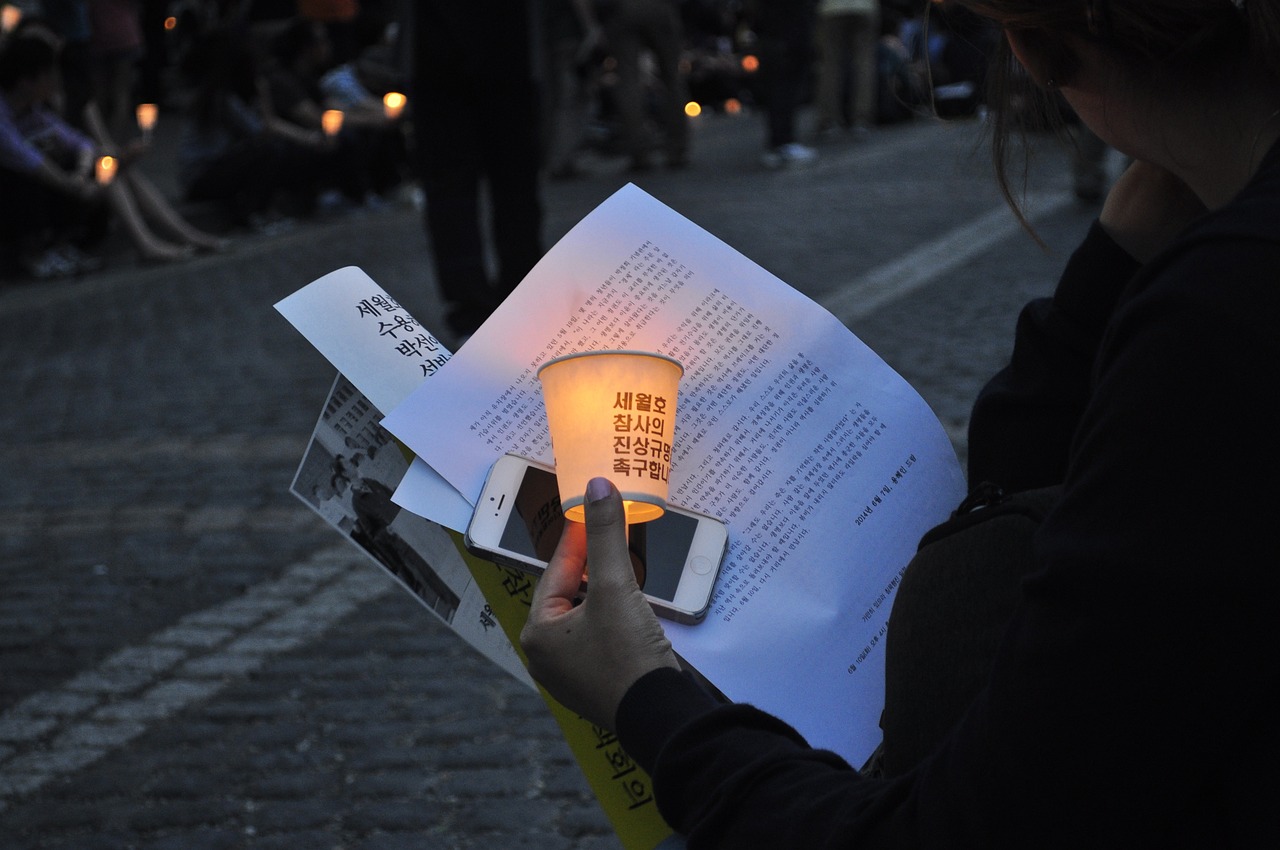
Volunteer Mobilization
Volunteer mobilization is one of the cornerstones of disaster response efforts spearheaded by religious organizations. These groups often tap into a vast pool of willing individuals who are not only eager to help but also deeply motivated by their faith and community values. When a disaster strikes, the ability to swiftly organize and deploy volunteers can mean the difference between life and death for those affected. Imagine a community facing the aftermath of a devastating flood; the roads are impassable, resources are scarce, and the need for immediate assistance is critical. In such scenarios, religious organizations can rally a legion of volunteers, transforming ordinary citizens into heroes.
What makes volunteer mobilization particularly effective within these organizations is the **sense of purpose** and **community** that drives individuals to act. Volunteers often come from local congregations, which fosters a sense of trust and familiarity among them. This connection not only enhances the effectiveness of the response but also helps in building a resilient community. Volunteers are usually trained to understand the specific needs of their neighbors, which allows them to provide targeted assistance. For instance, they might help distribute food and water, provide first aid, or assist in search and rescue operations.
Moreover, religious organizations frequently conduct training programs to prepare their volunteers for various disaster scenarios. These programs are designed to equip individuals with essential skills, such as basic first aid, emergency response techniques, and effective communication strategies. Such training ensures that volunteers are not only enthusiastic but also competent in their roles. As a result, when the call to action comes, these volunteers can confidently step into their roles, ready to make a tangible difference.
In addition to local volunteers, many religious organizations leverage their extensive networks to attract support from outside the affected areas. This can include mobilizing volunteers from other regions or even countries, creating a powerful coalition of compassionate individuals who come together to help those in need. For example, during major natural disasters, we often see teams of volunteers arriving from distant places, bringing with them not just manpower but also resources and expertise that can significantly enhance relief efforts.
However, the process of volunteer mobilization is not without its challenges. Coordinating large groups of volunteers requires effective leadership, clear communication, and a well-structured plan. Religious organizations must ensure that volunteers are not only informed about their roles but also feel supported throughout the process. This includes providing necessary supplies, safety protocols, and emotional support, especially in the wake of traumatic events. The commitment shown by volunteers can be overwhelming, but it's essential for organizations to create an environment where they feel valued and appreciated.
In summary, volunteer mobilization is a vital aspect of disaster response within religious organizations. By harnessing the power of community engagement and providing adequate training, these organizations are able to transform willing individuals into effective responders. The synergy created by local volunteers, combined with the support of broader networks, enhances the speed and effectiveness of disaster response, ultimately leading to a more resilient community capable of overcoming adversity.
- How do religious organizations recruit volunteers for disaster response?
Religious organizations often recruit volunteers through their congregations, community events, and social media outreach. They also engage in partnerships with local agencies to broaden their volunteer base. - What types of training do volunteers receive?
Volunteers typically receive training in first aid, emergency response, communication skills, and specific tasks related to disaster relief, ensuring they are well-prepared to assist effectively. - Can anyone volunteer for disaster response efforts?
Yes, anyone with a desire to help can volunteer, although some organizations may have age restrictions or require specific training for certain roles. - What role do religious beliefs play in motivating volunteers?
Many volunteers are driven by their faith and the desire to serve their community, viewing their involvement as a moral obligation or a way to live out their religious values.
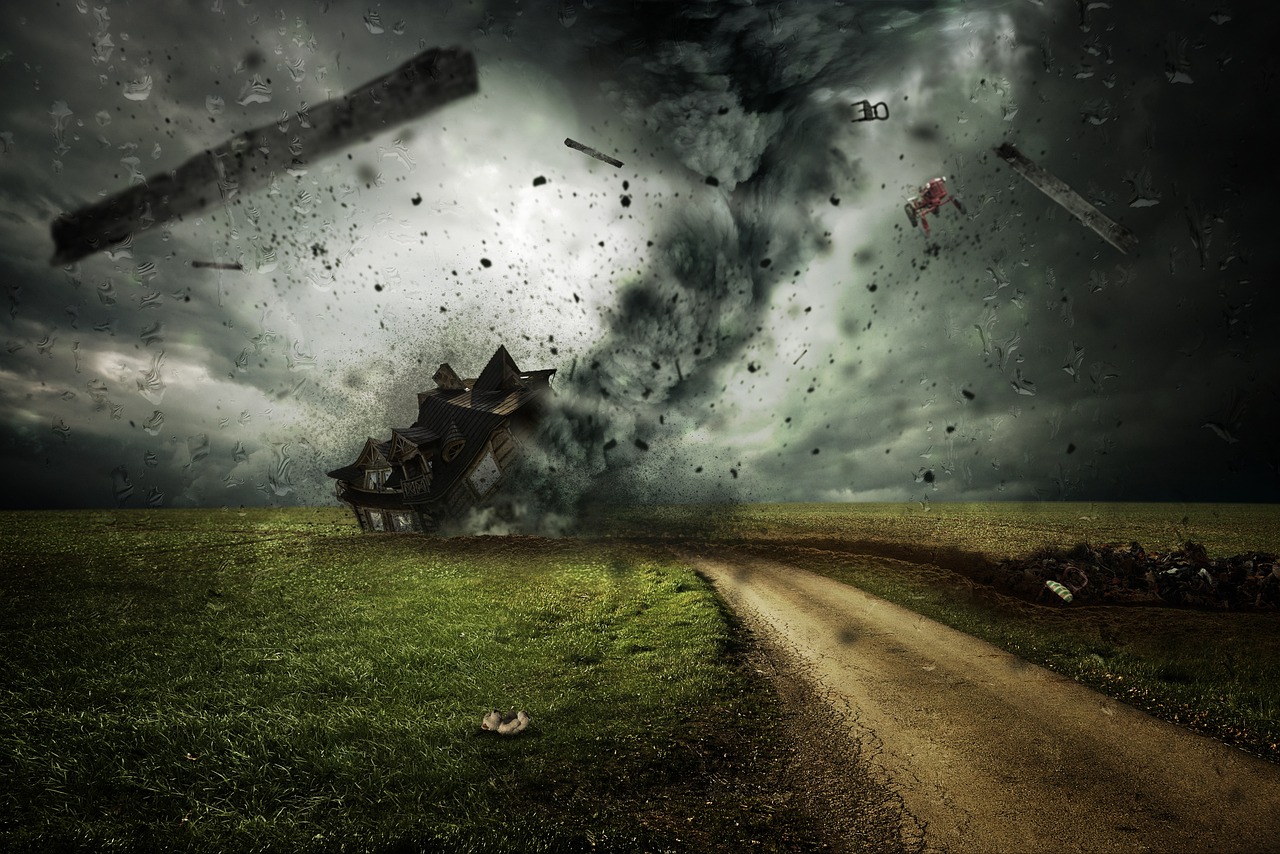
Training and Preparedness Programs
In the realm of disaster response, are vital components that significantly enhance the effectiveness of religious organizations. These programs are not just about theoretical knowledge; they are hands-on initiatives designed to equip volunteers with the skills they need to respond swiftly and efficiently when disaster strikes. Imagine a well-oiled machine, where each part knows exactly what to do to keep things running smoothly—that's the goal of these training programs.
Religious organizations often conduct workshops and drills that simulate real-life disaster scenarios. These sessions include a variety of topics, such as first aid, emergency communication, and basic search and rescue operations. By engaging volunteers in these realistic exercises, organizations ensure that when the time comes, they are not just reacting but are prepared to act decisively. For instance, a church might organize a community event where volunteers practice setting up temporary shelters or distributing food and water, creating a sense of familiarity with the processes involved in disaster relief.
Furthermore, many organizations offer specialized training for different types of disasters, whether it's natural disasters like hurricanes and earthquakes or man-made crises such as mass evacuations. This tailored approach allows volunteers to focus on the specific challenges they might face in their communities. In fact, some programs even incorporate mental health training, preparing volunteers to provide emotional support to those affected by trauma. After all, in the chaos of a disaster, a listening ear can be just as valuable as a helping hand.
Collaboration is another key aspect of these training programs. Religious organizations frequently partner with local emergency services and government agencies to ensure that their volunteers are aligned with broader community response plans. This not only fosters a sense of unity but also enhances the overall effectiveness of the disaster response efforts. When everyone is on the same page, the community as a whole can respond more effectively, minimizing confusion and maximizing resource utilization.
To illustrate the impact of these programs, consider the following table that highlights some key elements and benefits of training and preparedness initiatives:
| Program Element | Description | Benefits |
|---|---|---|
| Workshops | Hands-on training sessions focusing on specific skills. | Improved readiness and confidence among volunteers. |
| Simulation Drills | Realistic practice scenarios to prepare for actual disasters. | Enhanced teamwork and coordination during emergencies. |
| Specialized Training | Focused training for different types of disasters. | Increased effectiveness in addressing specific challenges. |
| Mental Health Support | Training to provide emotional assistance to victims. | Holistic care for affected individuals, addressing both physical and emotional needs. |
| Community Collaboration | Partnerships with local agencies for coordinated response. | Streamlined efforts and resource sharing. |
In conclusion, the importance of within religious organizations cannot be overstated. These initiatives not only prepare volunteers for immediate action but also foster a culture of resilience and community spirit. When disaster strikes, it's not just about the resources available; it's about the people who are ready to step up and make a difference. And with the right training, those individuals can turn chaos into coordinated care, ensuring that help is not just a promise but a reality.
- What types of disasters do these training programs cover? They typically cover natural disasters like hurricanes and earthquakes, as well as man-made crises.
- How can I get involved in a training program? Most religious organizations welcome volunteers; you can contact your local organization for information on upcoming training sessions.
- Are these training programs free? Many organizations offer free training, while some may charge a nominal fee to cover materials.
- Can I receive certification after completing a training program? Yes, many organizations provide certificates upon successful completion of their training courses.
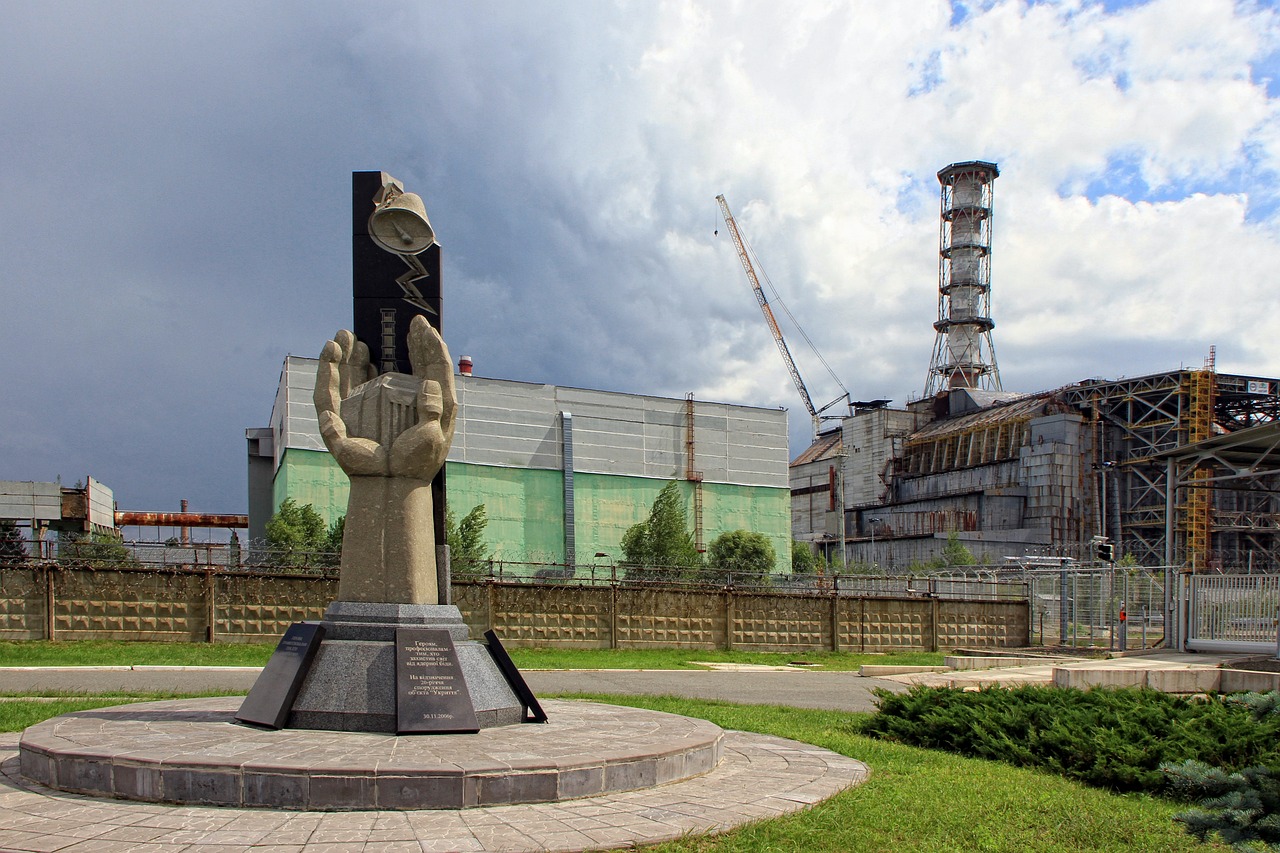
Partnerships with Local Authorities
When disaster strikes, the clock is ticking, and every second counts. This is where the partnerships between religious organizations and local authorities become crucial. These collaborations are not just beneficial; they are essential for effective disaster response. Religious organizations often have established networks and a profound understanding of the community's needs, while local authorities possess the logistical capabilities and resources necessary to implement wide-scale relief efforts. Together, they create a powerful synergy that can dramatically enhance the efficiency and effectiveness of disaster response.
One of the key advantages of these partnerships is the ability to streamline communication. In crisis situations, clear and concise information flow is vital. Religious organizations can act as a bridge, ensuring that the needs of the community are communicated effectively to local authorities. Conversely, they can relay vital information from officials back to the community, reducing confusion and ensuring that everyone is on the same page. This two-way communication fosters a sense of trust and cooperation, which is invaluable during emergencies.
Moreover, partnerships can lead to the sharing of resources. For instance, local authorities may have access to emergency supplies, logistics, and funding that can be leveraged by religious organizations. On the other hand, religious groups often have a dedicated volunteer base, ready to mobilize at a moment's notice. This combination can result in a more comprehensive and rapid response. In many cases, such collaborations can be seen in action through joint training exercises, where both parties prepare together for potential disasters. This not only enhances preparedness but also builds relationships that can be critical in times of need.
However, it’s important to recognize that these partnerships are not without their challenges. Differences in organizational culture, communication styles, and operational procedures can sometimes lead to misunderstandings. To mitigate these issues, it’s essential for both parties to establish clear roles and responsibilities from the outset. Regular meetings and joint planning sessions can help ensure that everyone is aligned and working toward the same goals.
In summary, the partnerships between religious organizations and local authorities are a testament to the power of collaboration in disaster response. By leveraging each other's strengths, they can create a more resilient community capable of withstanding and recovering from crises. This unity not only enhances immediate relief efforts but also fosters long-term community resilience, ensuring that when the next disaster strikes, the response will be even more effective.
- How do religious organizations find partners in local authorities?
Many religious organizations proactively reach out to local governments, establishing relationships through community engagement initiatives and disaster preparedness meetings. - What are the benefits of partnerships in disaster response?
Partnerships can enhance resource sharing, improve communication, and increase the speed and efficiency of response efforts during disasters. - Are there any challenges in these partnerships?
Yes, challenges such as differing organizational cultures and communication styles can arise, but they can be addressed through clear planning and regular dialogue. - Can these partnerships aid in long-term recovery?
Absolutely! Collaborations between religious organizations and local authorities can support sustainable development efforts and emotional recovery in affected communities.

Challenges Faced by Religious Organizations
While religious organizations play a vital role in disaster response, they are not without their challenges. One of the primary hurdles they face is resource limitations. Many of these organizations operate on tight budgets, relying heavily on donations and volunteer efforts. This can sometimes restrict their ability to purchase necessary supplies or hire professional staff needed during emergencies. Imagine trying to build a sturdy house with only a handful of tools; that’s what it feels like for these organizations when they lack sufficient resources.
Another significant challenge is coordination issues. In the chaos that often accompanies disasters, multiple organizations may rush to provide aid, which can lead to overlapping efforts and confusion. This lack of coordination can result in some areas receiving too much help while others are left wanting. To illustrate, think of a group of friends trying to organize a surprise party for someone; if everyone tries to plan their own version of the party without communicating, it could easily turn into a chaotic mess. Similarly, without proper communication and collaboration among organizations, disaster response can become inefficient.
Additionally, the need for interfaith collaboration presents another challenge. In many communities, various religious groups exist, each with its own beliefs and practices. While this diversity can be a strength, it can also lead to tensions or misunderstandings when working together during a crisis. For instance, some organizations may focus on specific populations, which can inadvertently create feelings of exclusion among others. Overcoming these barriers requires open dialogue, mutual respect, and a shared commitment to helping those in need, regardless of their faith.
Furthermore, the emotional toll on volunteers and staff cannot be overlooked. Witnessing the aftermath of disasters and the suffering of affected individuals can lead to burnout and emotional distress among those providing aid. It’s akin to running a marathon; if you don’t pace yourself and take care of your mental health, you risk collapsing before reaching the finish line. Thus, organizations must prioritize the well-being of their volunteers to maintain a sustainable response capability.
In summary, while religious organizations are crucial players in disaster response, they face numerous challenges that can hinder their efforts. By addressing issues such as resource limitations, coordination, interfaith collaboration, and volunteer well-being, these organizations can enhance their effectiveness and continue to provide invaluable support to communities in crisis.
- What role do religious organizations play in disaster response? Religious organizations often provide immediate aid, mobilize volunteers, and facilitate long-term recovery efforts in affected communities.
- How do they overcome resource limitations? Many organizations rely on community donations, partnerships, and grants to bolster their resources during crises.
- What are some examples of successful collaborations? Various religious groups have worked together with local governments and agencies to streamline disaster response, ensuring that aid is distributed effectively.
- How do they support volunteers emotionally? Organizations often implement support programs that include counseling, training, and team-building activities to help volunteers cope with the emotional challenges of disaster response.

Case Studies of Successful Interventions
When we look at the impact of religious organizations during disasters, several case studies stand out, showcasing their unique ability to mobilize resources and provide critical support. One notable example is the response of the American Red Cross in collaboration with local faith-based organizations during Hurricane Katrina in 2005. These organizations not only provided immediate shelter and food but also established long-term recovery programs that helped thousands of displaced families rebuild their lives.
Another compelling case is the role of the Islamic Relief Worldwide during the 2010 Haiti earthquake. They quickly set up emergency response teams and worked with local mosques to distribute food, water, and medical supplies. Their established networks allowed them to reach remote areas that other organizations struggled to access. This highlights how religious organizations can bridge gaps in disaster response, often reaching vulnerable populations that might otherwise be overlooked.
In the aftermath of the 2011 Japan earthquake and tsunami, various religious groups, including Shinto and Buddhist organizations, came together to provide support. They not only offered immediate aid but also facilitated spiritual healing sessions for survivors, recognizing the emotional toll such disasters take. This holistic approach to recovery, which includes both physical and emotional support, is a testament to the unique strengths of religious organizations in crisis situations.
Moreover, religious organizations often engage in innovative strategies that enhance their effectiveness. For instance, the Catholic Relief Services implemented a program in the Philippines after Typhoon Haiyan in 2013 that focused on disaster preparedness training for local communities. This initiative not only equipped individuals with the skills needed to respond to future disasters but also fostered a sense of community resilience that is crucial in the face of recurring natural disasters.
These case studies illustrate that the involvement of religious organizations in disaster response is not just about immediate aid; it’s about building a framework for long-term recovery and resilience. By leveraging their community trust, local knowledge, and extensive networks, these organizations can provide a comprehensive response that addresses both the physical needs of affected individuals and the emotional and spiritual aspects of recovery.
- How do religious organizations coordinate their disaster response efforts?
Religious organizations often collaborate with local governments, NGOs, and other community groups to streamline their efforts, ensuring that resources are used efficiently and effectively. - What challenges do religious organizations face in disaster response?
Some challenges include limited resources, the need for interfaith collaboration, and coordination issues with other organizations and government agencies. - Can anyone volunteer with religious organizations during disasters?
Yes, many religious organizations welcome volunteers from all backgrounds, providing training and support to help them effectively assist in disaster response efforts.
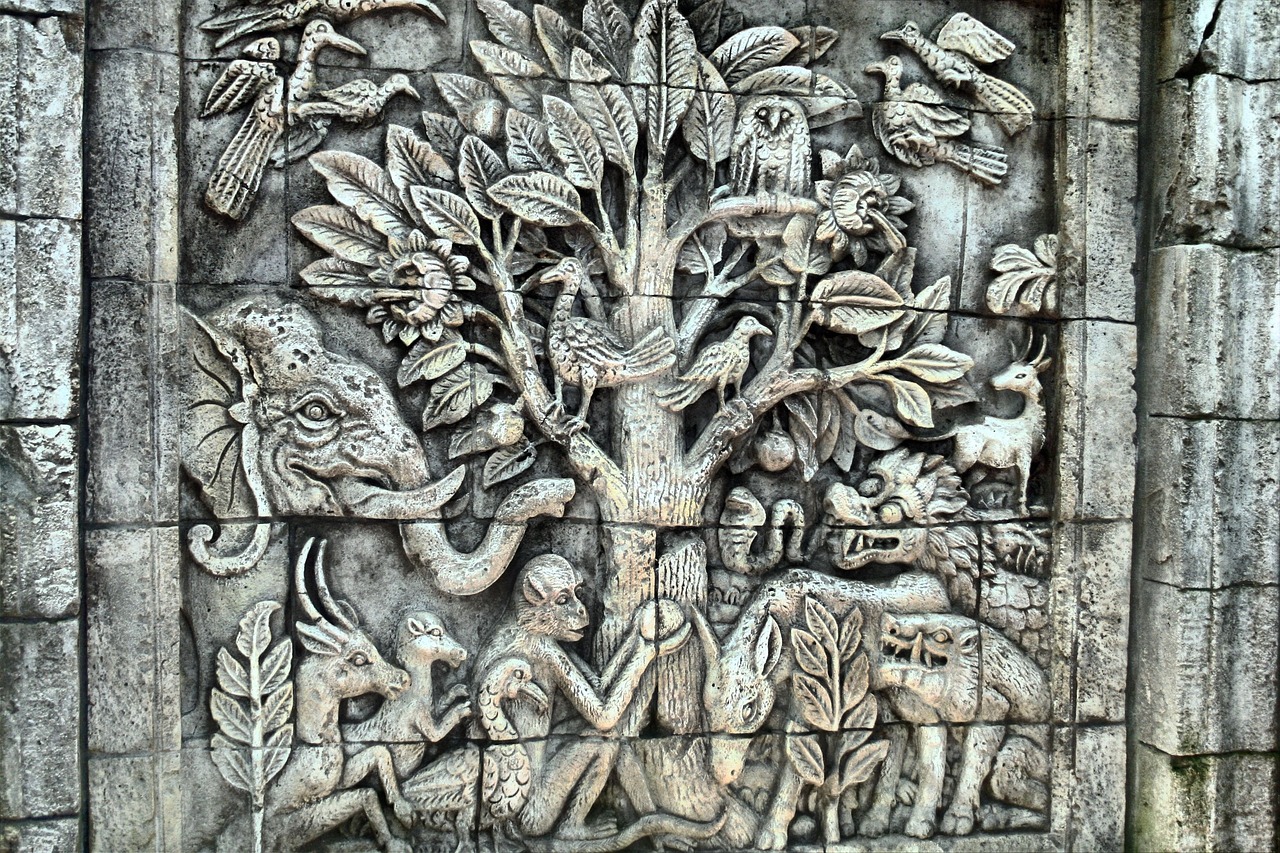
International Disaster Response Efforts
When disaster strikes on a global scale, the role of religious organizations becomes even more crucial. These organizations often transcend national boundaries, uniting diverse communities under a shared mission of compassion and support. Their extensive networks allow them to mobilize resources rapidly, providing aid where it's needed most. For instance, during the devastating earthquake in Haiti in 2010, religious organizations from around the world came together to deliver food, medical supplies, and shelter to those affected. This kind of swift action highlights the unique advantages that religious organizations possess in international disaster response efforts.
One of the key strengths of religious organizations in international disaster response is their ability to connect with local populations. They often have established relationships with local leaders and communities, which can significantly enhance their effectiveness. When a crisis occurs, these organizations can tap into their existing networks to assess needs and distribute aid efficiently. This local engagement fosters trust and ensures that the assistance provided is culturally sensitive and relevant. For example, in the aftermath of Typhoon Haiyan in the Philippines, religious groups worked closely with local parishes to identify the most vulnerable families and deliver aid directly to them, thus ensuring that help reached those who needed it most.
Moreover, many religious organizations have developed sophisticated logistical capabilities to manage international relief efforts. They often coordinate with other NGOs, governmental agencies, and international bodies to streamline their operations. This collaboration is essential, as it helps to avoid duplication of efforts and ensures that resources are allocated where they are most needed. For instance, organizations like the International Federation of Red Cross and Red Crescent Societies often partner with religious groups to enhance their reach and effectiveness during crises. By pooling resources and expertise, they can create a more robust response to disasters.
However, responding to international disasters is not without its challenges. Religious organizations may face difficulties in navigating different legal and bureaucratic frameworks in various countries. Additionally, they often have to contend with logistical hurdles, such as transportation and supply chain issues, especially in remote or heavily affected areas. To address these challenges, many organizations invest in training programs that prepare their volunteers for the complexities of international disaster response. These programs equip individuals with the skills necessary to adapt to different environments and work effectively in diverse cultural contexts.
In conclusion, the role of religious organizations in international disaster response efforts is both significant and multifaceted. Their ability to mobilize quickly, engage with local communities, and collaborate with other entities makes them invaluable during times of crisis. As we look to the future, it is essential for these organizations to continue strengthening their networks and enhancing their preparedness, ensuring they can provide effective support when the next disaster strikes.
- How do religious organizations mobilize resources during disasters?
Religious organizations often use their established networks and community trust to quickly gather resources and volunteers when a disaster occurs. - What challenges do religious organizations face in disaster response?
They often encounter resource limitations, coordination issues, and the need for interfaith collaboration, which can complicate their efforts. - Can religious organizations operate internationally?
Yes, many religious organizations have a global presence and can mobilize resources and support across different countries and cultures. - How do religious organizations ensure aid reaches those in need?
By leveraging local connections and engaging with community leaders, they can effectively identify and assist the most vulnerable populations.
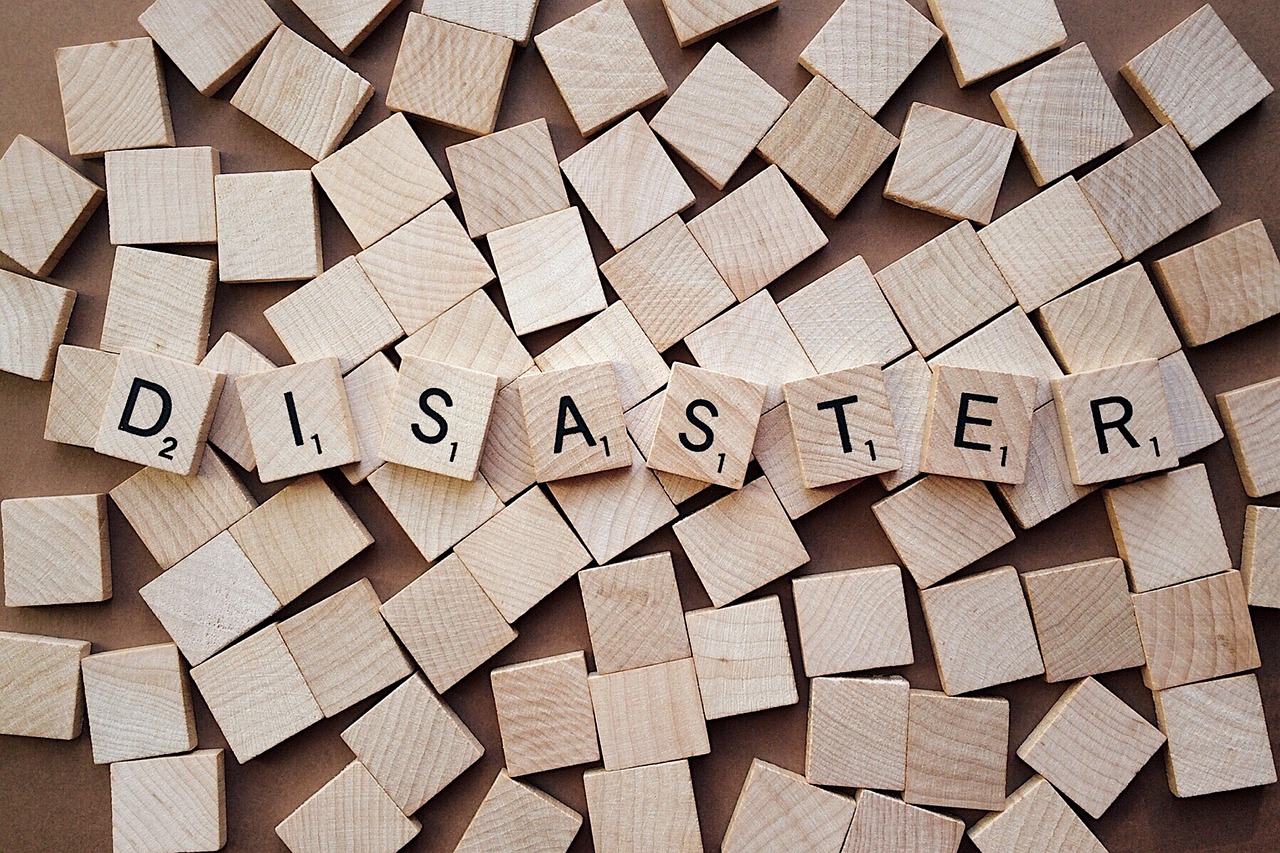
Long-Term Recovery and Support
When disaster strikes, the immediate response is crucial, but the journey doesn’t end there. Religious organizations play an integral role in the long-term recovery and support of affected communities, often stepping in when the dust settles and the spotlight fades. Their commitment goes beyond just delivering aid; they focus on rebuilding lives and restoring hope. This multifaceted approach involves not only physical reconstruction but also emotional and spiritual healing, which are equally vital in the aftermath of a disaster.
One of the key strengths of religious organizations is their ability to foster community resilience. They are often already embedded within the communities they serve, allowing them to understand the unique needs and challenges faced by individuals and families. This connection enables them to tailor their recovery efforts effectively. For instance, they might establish community centers where people can gather, share their experiences, and begin the healing process together. These centers often serve as hubs for various support services, including counseling, job training, and financial assistance, all aimed at helping individuals regain their footing.
Moreover, religious organizations frequently engage in collaborative initiatives with local governments, NGOs, and other stakeholders to ensure a comprehensive recovery strategy. By pooling resources and expertise, they can maximize their impact. For example, during the recovery phase after a major hurricane, a local church might partner with a nonprofit organization to provide housing assistance, while also offering spiritual support to those who have lost everything. This collaborative approach not only enhances the effectiveness of recovery efforts but also builds a sense of community solidarity.
In addition to physical and emotional support, religious organizations often emphasize long-term sustainability. They understand that rebuilding is not just about restoring what was lost but also about creating a more resilient future. This might involve advocating for policies that address the root causes of vulnerability, such as poverty and lack of access to education. By empowering individuals through skills training and educational programs, these organizations help communities prepare for future challenges, reducing their susceptibility to future disasters.
Furthermore, the role of faith-based organizations in disaster recovery often extends to international efforts. Many religious groups have established global networks that allow them to respond swiftly to disasters around the world. They mobilize resources, coordinate relief efforts, and provide support to communities in need, regardless of geographical boundaries. This international collaboration not only aids immediate recovery but also fosters a global sense of compassion and solidarity.
In conclusion, the long-term recovery and support provided by religious organizations are vital components in the aftermath of disasters. Their unique blend of community trust, collaborative spirit, and commitment to sustainability enables them to make a lasting impact on the lives of those affected. As they continue to innovate and adapt their approaches, the resilience of communities grows stronger, transforming the narrative from one of loss to one of hope and renewal.
- How do religious organizations mobilize resources for disaster recovery?
Religious organizations often leverage their community networks and relationships to gather donations, volunteers, and supplies. They may also partner with local businesses and government agencies to enhance their resource mobilization efforts. - What types of support do religious organizations offer during long-term recovery?
They provide a range of support services, including emotional and spiritual counseling, financial assistance, job training, and community rebuilding initiatives. - How can individuals get involved with religious organizations during a disaster?
Individuals can volunteer their time, donate funds or supplies, and participate in community recovery programs organized by these organizations.
Frequently Asked Questions
- What role do religious organizations play in disaster response?
Religious organizations are often at the forefront of disaster response efforts. They leverage their established networks and community trust to mobilize resources quickly and effectively. This unique position allows them to provide immediate assistance and support to those affected by disasters.
- How do religious organizations build trust within communities?
Many religious organizations have deep-rooted connections within their communities. This trust is built over time through consistent engagement, support during crises, and a commitment to the welfare of community members. When disaster strikes, this trust enables them to effectively reach and assist those in need.
- How are volunteers mobilized for disaster response?
Religious organizations often rely on their volunteer base to assist in disaster response. They can quickly mobilize large groups of dedicated individuals, enhancing the speed and effectiveness of relief efforts. Volunteers are typically motivated by their faith and a desire to help others during challenging times.
- What kind of training do volunteers receive?
Many religious organizations conduct training programs to prepare volunteers for disaster scenarios. These programs equip individuals with essential skills in areas like first aid, crisis management, and logistics, ensuring a more organized and effective response during emergencies.
- How do religious organizations collaborate with local authorities?
By forming partnerships with local governments and agencies, religious organizations can streamline disaster response efforts. This collaboration facilitates resource sharing, improves communication, and enhances overall community preparedness, making the response more efficient and effective.
- What challenges do religious organizations face in disaster response?
Despite their strengths, religious organizations encounter various challenges, such as resource limitations, coordination issues with other agencies, and the need for interfaith collaboration. These challenges can hinder their ability to respond effectively during disasters.
- Can you provide examples of successful disaster interventions by religious organizations?
Yes! There are numerous case studies showcasing how religious organizations have successfully implemented disaster response initiatives. These examples highlight innovative strategies and the positive impact of their efforts on affected communities, demonstrating their vital role in recovery.
- How do religious organizations contribute to long-term recovery efforts?
Religious organizations often play a crucial role in long-term recovery by focusing on sustainable development and emotional support for affected individuals. Their commitment extends beyond immediate relief, as they work to rebuild communities and help individuals heal over time.
- Are religious organizations involved in international disaster response?
Absolutely! Many religious organizations operate on a global scale, providing assistance during international disasters. Their extensive networks enable them to mobilize resources and support in diverse cultural contexts, making a significant impact worldwide.



















